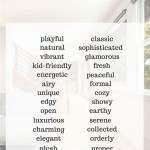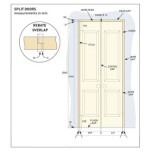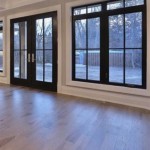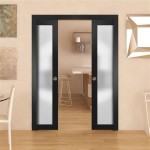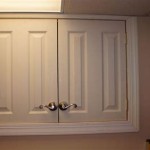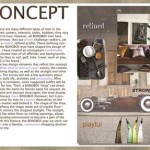Exploring the Diverse World of Interior Design Styles
Interior design styles represent a spectrum of aesthetic preferences, architectural influences, and historical trends, each offering a distinct approach to creating functional and visually appealing spaces. Understanding these styles is crucial for homeowners, renters, and designers alike as it provides a vocabulary for communicating desired outcomes and achieving a cohesive and harmonious environment. The nuances of each style extend beyond mere decoration, encompassing considerations of space planning, material selection, lighting, and overall atmosphere.
This article will explore several prominent interior design styles, highlighting their defining characteristics and key elements. A thorough understanding of these styles provides a solid foundation for informed decision-making when embarking on any interior design project, regardless of scale.
Identifying Key Elements of Interior Design Styles
Each interior design style possesses a unique set of defining characteristics that contribute to its overall aesthetic. These elements can be categorized broadly into several key areas:
Color Palette: The color palette is a fundamental aspect of any interior design style. Different styles favor different color schemes. For example, Scandinavian design often utilizes neutral tones with pops of muted color, while maximalist design embraces bold and vibrant hues. The choice of colors influences the mood and visual impact of the space.
Materials and Textures: The selection of materials and textures plays a significant role in defining the character of a space. Natural materials like wood, stone, and linen are commonly found in rustic and organic styles. Conversely, sleek and polished materials such as metal, glass, and concrete are often associated with modern and industrial designs. The interplay of different textures adds depth and visual interest.
Furniture: Furniture is a key element in shaping the functionality and style of a room. Each design style typically features furniture with distinct shapes, forms, and materials. Mid-century modern furniture, for example, is characterized by clean lines, tapered legs, and organic shapes. Traditional styles often incorporate ornate details, carved wood, and plush upholstery.
Accessories and Décor: Accessories and décor items serve to personalize and enhance the overall aesthetic of a space. These elements can include artwork, rugs, lighting fixtures, plants, and decorative objects. The selection and arrangement of accessories can further reinforce the desired style and add character to the room.
Architectural Details: Existing architectural features, such as moldings, fireplaces, and windows, can significantly influence the choice of interior design style. Certain styles complement specific architectural styles, while others may be used to contrast or update existing features. For instance, a Victorian-era home might lend itself well to a traditional or eclectic design, while a modern loft could be transformed into an industrial or minimalist space.
Exploring Prominent Interior Design Styles
The following provides a brief overview of several well-established and popular interior design styles. Each description highlights the key characteristics and defining features of the style.
Modern: Modern interior design emphasizes clean lines, simplicity, and functionality. It typically features a neutral color palette, open floor plans, and a focus on natural light. Furniture is often sleek and minimalist, with an emphasis on form and function over ornamentation. Materials such as steel, glass, and concrete are commonly used.
Contemporary: Contemporary design is often confused with modern design, but it represents the style of the present moment. It is constantly evolving and incorporating new trends and technologies. Contemporary design often features a mix of materials, textures, and colors, with an emphasis on comfort and livability. It embraces asymmetry and unique shapes.
Minimalist: Minimalism is characterized by extreme simplicity and the absence of unnecessary ornamentation. It focuses on essential elements and functional spaces. A minimalist interior typically features a neutral color palette, clean lines, and minimal furniture. Clutter is strictly avoided, and storage solutions are prioritized to maintain a sense of order and tranquility.
Industrial: Industrial design draws inspiration from warehouses, factories, and other industrial spaces. It often incorporates exposed brick, concrete floors, metal accents, and exposed pipes. Furniture is typically functional and utilitarian, with a focus on raw materials and industrial aesthetics. A neutral color palette with pops of black and metal tones is common.
Scandinavian: Scandinavian design emphasizes simplicity, functionality, and natural light. It features a neutral color palette, natural materials such as wood and linen, and a focus on creating a warm and inviting atmosphere. Furniture is often simple and functional, with clean lines and organic shapes. The incorporation of plants and natural elements is also a key characteristic.
Traditional: Traditional design reflects classic European styles, often incorporating ornate details, rich colors, and luxurious materials. Furniture is typically heavy and upholstered, with carved wood and elaborate details. Accessories include antiques, artwork, and decorative objects that reflect a sense of history and elegance. Symmetry and formal arrangements are common.
Bohemian: Bohemian, or Boho, design is characterized by its eclectic and free-spirited nature. It embraces a mix of patterns, textures, and colors, often incorporating vintage and global influences. Furniture is typically comfortable and relaxed, with a focus on layering textiles and accessories. Plants, vintage finds, and personal collections are integral to the bohemian aesthetic.
Rustic: Rustic design celebrates natural materials and a connection to the outdoors. It often features exposed wood beams, stone fireplaces, and natural textures. Furniture is typically handcrafted and sturdy, with a focus on durability and functionality. A warm and earthy color palette is common, with accents of natural greens and browns.
Mid-Century Modern: Mid-century modern design, popular from the 1940s to the 1960s, emphasizes clean lines, organic shapes, and functional design. It features a mix of materials, including wood, metal, and plastic. Furniture is often lightweight and streamlined, with tapered legs and simple silhouettes. A vibrant color palette with pops of orange, avocado green, and yellow is common.
Coastal: Coastal design evokes a sense of relaxation and serenity, inspired by the beach and ocean. It features a light and airy color palette, natural materials such as linen and rattan, and a focus on creating a breezy and comfortable atmosphere. Furniture is typically relaxed and comfortable, with a focus on natural light and ventilation. Seashells, nautical décor, and woven textures are common accessories.
Mixing and Matching Interior Design Styles
While understanding individual interior design styles is important, many designers and homeowners choose to blend elements from different styles to create a unique and personalized space. This approach, known as eclectic design, allows for greater creativity and flexibility. However, successful mixing of styles requires careful consideration and a cohesive vision.
Establishing a Dominant Style: When mixing styles, it is generally advisable to establish a dominant style as the foundation of the design. This provides a framework for incorporating elements from other styles without creating a disjointed or chaotic look. The dominant style can be chosen based on personal preferences, architectural features, or the desired overall mood of the space.
Creating a Cohesive Color Palette: Maintaining a cohesive color palette is crucial when mixing styles. Choose a limited range of colors that complement each other and tie the different elements together. A neutral backdrop can provide a unifying base for incorporating pops of color and accent pieces from different styles.
Balancing Textures and Materials: Balancing textures and materials is essential for creating a visually appealing and harmonious space. Mix and match different textures, such as smooth and rough, hard and soft, to add depth and interest. Consider the materials used in furniture, flooring, and accessories and ensure that they complement each other.
Paying Attention to Scale and Proportion: Scale and proportion are important considerations in any interior design project, but they are particularly crucial when mixing styles. Ensure that furniture and accessories are appropriately sized for the space and that they are arranged in a balanced and harmonious manner. Avoid overcrowding the space with too many disparate elements.
Incorporating Personal Touches: Personal touches and unique elements are what truly make a space feel like home. Incorporate artwork, photographs, and decorative objects that reflect your personal style and interests. These elements can help to bridge the gap between different styles and create a cohesive and personalized aesthetic.
The world of interior design styles is vast and varied, offering a multitude of options for creating spaces that reflect individual preferences and lifestyles. By understanding the key elements and defining characteristics of different styles, individuals can make informed decisions and achieve a cohesive and harmonious interior. Furthermore, the ability to mix and match styles allows for greater creativity and personalization, resulting in truly unique and inspiring environments.

Top 26 Interior Design Styles With Examples And Academy

Get To Know 12 Of The Most Popular Interior Design Styles Hommés Studio

Interior Design Styles 101 The Ultimate Guide To Decorating In 2025 Decorilla

A Complete Guide To Contemporary Interior Design And Academy

Interior Design Styles Designteacher

Decorating Styles 101 Find The Interior Design You Love

A Guide To The 30 Interior Design Styles You Need Know

40 Interior Design Styles Defined

Most Popular Interior Design Styles You Need To Know Bohemian Vogue

Get To Know 12 Of The Most Popular Interior Design Styles Hommés Studio
Related Posts

